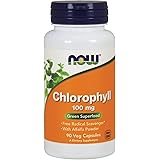The conventional wisdom often paints cortisol as the arch-nemesis of well-being, a stress hormone solely responsible for unwanted physical and mental health issues. However, as Dr. Andy Galpin and Dr. Andrew Huberman elucidate in the accompanying video, this perspective is fundamentally flawed; cortisol is an absolutely indispensable hormone critical for fitness adaptation, recovery, and overall physiological function, provided its release is strategically regulated.
Far from being inherently “bad,” cortisol plays numerous vital roles within the human body. Understanding its nuanced function is paramount for anyone seeking to optimize their health, enhance athletic performance, or simply navigate daily stressors more effectively. We must shift our perception from villainizing this powerful hormone to appreciating its necessity, learning instead how to harness its benefits. This article will delve deeper into the intricate world of cortisol, expanding on its essential contributions to our physiology and offering actionable insights for strategic management.
Understanding Cortisol’s Indispensable Role in Your Body
Cortisol, often labeled simply as the “stress hormone,” carries a much more complex and vital identity within our physiological systems. It acts as a primary energy signaling molecule, orchestrating numerous processes crucial for survival and adaptation. When the body encounters physical or psychological stress, cortisol is released to mobilize energy stores, reduce inflammation, and facilitate repair mechanisms, preparing us for various challenges.
The idea that physiology is not personified is a crucial concept to grasp when considering cortisol. There are no “good” or “bad” hormones; instead, each serves a specific purpose, and their efficacy hinges on appropriate timing and concentration. Suppressing cortisol indiscriminately, especially when the body genuinely requires its activation, can lead to significant detrimental outcomes. This hormone is a foundational component of our stress response, directly impacting metabolism, immune function, and overall systemic balance.
Cortisol’s Daily Rhythm: Essential for Optimal Function
A healthy cortisol pattern is characterized by a natural diurnal rhythm, meaning its levels fluctuate predictably throughout a 24-hour cycle. Cortisol typically rises rapidly after waking in the morning, often influenced by bright light exposure, exercise, and even caffeine intake, preparing the body for the day’s activities. This morning surge is not merely a byproduct of stress but a critical component of our natural wake cycle and metabolic activation.
In contrast, cortisol levels should gradually decline throughout the day, reaching their lowest point in the evening before sleep. This downward trend is essential for promoting relaxation and facilitating restorative sleep. Deviations from this established pattern, such as consistently elevated cortisol in the afternoon or evening, have been linked to various health issues, including certain forms of depression, as highlighted by research from Stanford Psychiatry’s David Spiegel and the renowned Dr. Robert Sapolsky, author of *Why Zebras Don’t Get Ulcers*. Maintaining this natural ebb and flow is key to regulating many bodily functions.
The Critical Link Between Cortisol, Exercise, and Adaptation
For individuals engaged in regular exercise and seeking performance improvements, understanding cortisol’s role is absolutely non-negotiable. Dr. Galpin unequivocally states that significant progress from exercise training will not occur without a substantial spike in cortisol. This powerful hormone is fundamentally involved in initiating and participating in the recovery process, directly triggering adaptation in response to physical stressors.
During strenuous exercise, cortisol levels naturally elevate, playing a pivotal role in breaking down stored energy (like glycogen and fat) to fuel muscle activity and repair. This catabolic response is a necessary precursor to subsequent anabolic (building) processes, which drive muscle growth and strength gains. Therefore, blunting this essential hormonal surge, particularly early in the day or before a workout, inadvertently suppresses the body’s capacity for adaptation and improvement, making training efforts less effective. You simply cannot expect optimal results without this physiological component.
When Suppression Becomes Counterproductive: The Supplement Dilemma
The wellness industry often promotes various supplements for their alleged “cortisol-lowering” properties, such as Ashwagandha and Rhodiola. While these adaptogens may have a place in highly specific, medically indicated scenarios of chronic, excessive cortisol, their indiscriminate use by otherwise healthy individuals can be highly counterproductive. Taking such supplements as a general prophylactic measure, especially before exercise, can actively interfere with the body’s natural adaptive responses.
Many individuals might unknowingly suppress the very cortisol spikes needed for growth, recovery, and immune function by misusing these substances. Dr. Galpin’s athlete resilience protocols, for instance, do not include these general cortisol-lowering agents for this precise reason. The goal is not to eliminate cortisol but to facilitate its healthy fluctuation. Therefore, strategic cortisol management means allowing the necessary spikes and then employing methods to encourage its natural return to baseline rather than chemically forcing a reduction.
Strategic Cortisol Management: Lifestyle Approaches for Balance
While cortisol spikes are vital, ensuring they return to baseline promptly is equally important to prevent the detrimental effects of chronic elevation. Effectively managing this transition involves a combination of mindful lifestyle practices that support the body’s natural regulatory mechanisms. This is about teaching your body to respond appropriately, rather than suppressing its innate responses.
Breathing methods are incredibly potent tools for immediate cortisol downregulation. Techniques like physiological sighs or box breathing can rapidly shift the nervous system from a sympathetic (fight-or-flight) to a parasympathetic (rest-and-digest) state, helping cortisol levels recede after a stressor. Furthermore, paying meticulous attention to psychological and physical stress during the six to eight hours preceding sleep is critical. Minimizing screens, engaging in relaxing activities, and cultivating a peaceful evening routine can significantly influence nighttime cortisol levels, promoting better sleep quality and overall recovery.
The Strategic Alliance: Carbohydrates and Cortisol Regulation
Understanding the interplay between nutrition and hormonal balance offers another powerful avenue for strategic cortisol regulation. Notably, carbohydrates can play a significant role in helping to “quash” or, more accurately, modulate cortisol levels, especially in the evening. As Dr. Huberman mentions, cortisol fundamentally acts as an energy signaling molecule, indicating a need for fuel, often by liberating free fatty acids into the bloodstream.
Ingesting carbohydrates, particularly starchy ones, signals to the body that ample energy is available, thereby reducing the perceived need for cortisol to mobilize fuel stores. This mechanism, potentially involving pathways related to tryptophan and serotonin release or the upregulation of AMPK at a cellular level, can lead to a subsequent reduction in cortisol. Consequently, consuming carbohydrates strategically in the evening can facilitate the natural decline of cortisol, improve sleep quality, and enhance overall recovery. This is not about demonizing carbohydrates but about recognizing their potent physiological effects when timed correctly.
Many individuals experience improved sleep and reduced perceived stress when they incorporate a controlled amount of quality carbohydrates into their evening meal. This nutritional strategy helps the body transition from an alert, “energy-seeking” state to a calmer, “energy-replete” condition, which directly supports the physiological shift needed for deep, restorative sleep. It is a powerful example of how intentional dietary choices can directly influence hormonal balance, demonstrating a clear link between what we eat and our body’s stress response. This strategic approach to carbohydrate timing exemplifies active cortisol regulation, preventing chronic elevation without blunting necessary daytime spikes.











